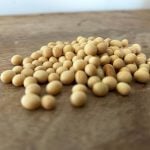
Tag Archives Did you Know

Nature doubles down on climate warming
A new study shows regions are more often simultaneously experiencing hot and dry conditions

Citizens and scientists
Laypeople can help drive and expand agriculture research

Energy crops a benefit
If the land isn’t growing cash crops give energy options a shot, say researchers

Gene research could beef up the herd
Brazilian researchers identify 35 genes associated with various attributes

A dietary mismatch
Agriculture produces plenty of food, but not necessarily the right types

Space… the final farming frontier
Treatment with one plant hormone appears to make space farming possible

Box it up
Researchers say ‘control boxes’ could limit nitrate run-off from tile drains

Farmers prevented the ice age
If it weren’t for the methane and carbon dioxide emissions of early farmers the world would look much different

All whole grains fight diabetes
New research says the most important thing is that you eat enough of them

Agriculture improving environmentally
More than a third of the world’s farms have already taken steps to lower their environmental impact while staying productive


